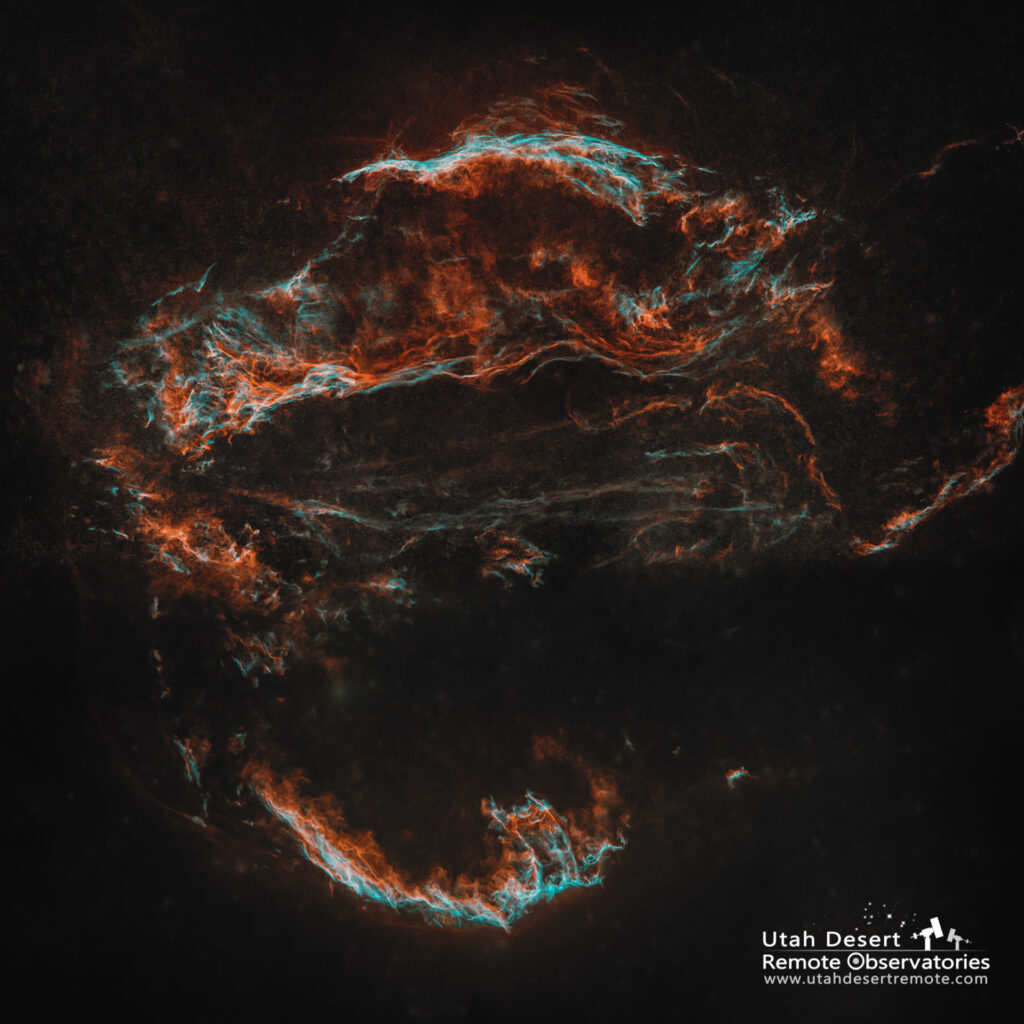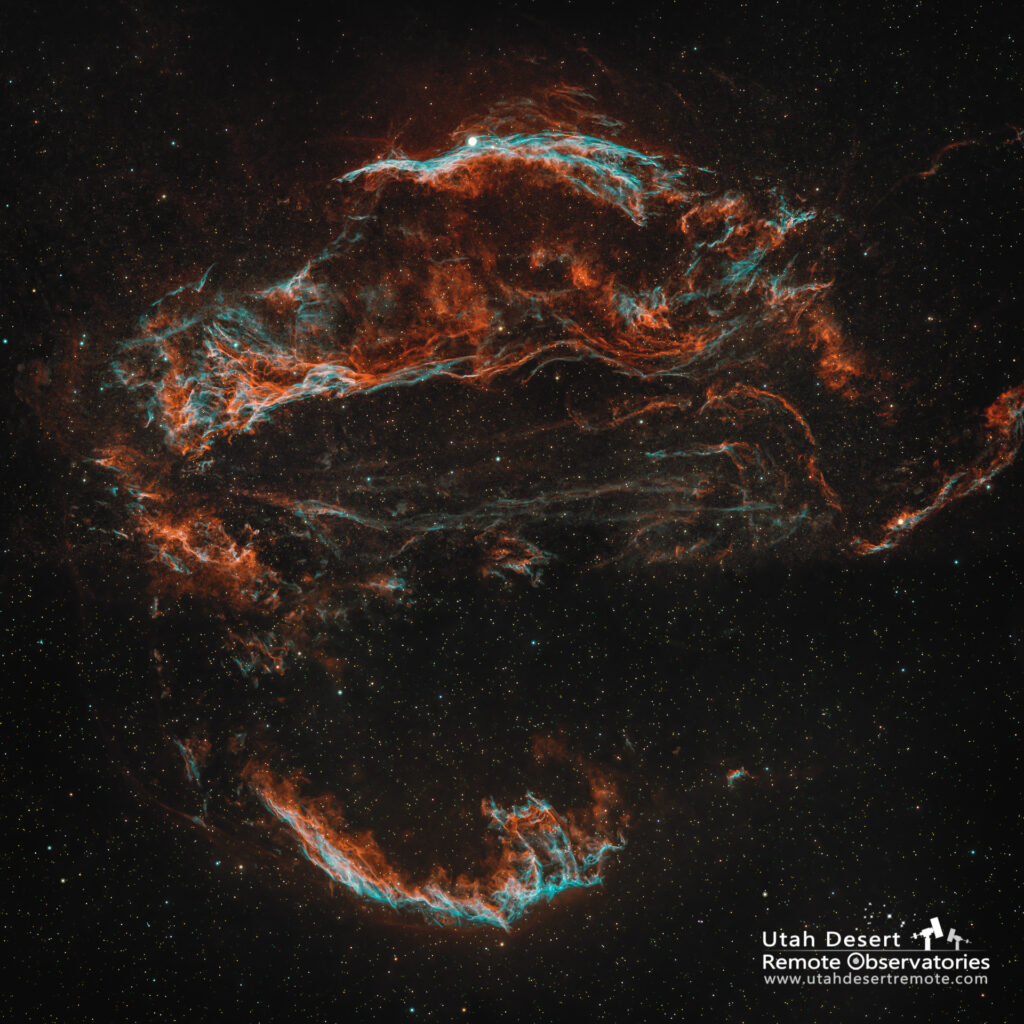One of the issues we deal with in astrophotography is how we show the stars in the image. Do you like big stars, small stars or no stars?
One of the best ways to manage stars is to remove them using a tool like StarNet++ to create a starless version of you photo. Then you can subtract the starless layer from the original creating a layer with only stars. The true power of that approach is that you can then process the nebula and the stars independently which allows you to stretch the nebula without bloating the stars.


In this example of the Veil Nebula complex I went a step further by photographing the stars with a rather short 60 second exposure to focus on getting good star color. I then used the stars from the original image to align everything. The result is the nebula is shown in the HOO (hydrogen-oxygen-oxygen for red, green and blue) color palette while the stars are natural RGB colors.
Capturing good astrophotography data is a big part of the challenge but post processing is really where the decisions get made to transform the raw data into your own work of art. Contracting with a remote observatory is a great way to take the pain out of data collection so you can focus on transforming your vision into an original work of art. Remote observatories are generally located under better sky conditions and have the right equipment and staff for the process to run smoothly. Utah Desert Remote Observatories offers by-the-imaging-hour rentals that include a Zoom planning session with our staff to determine the target and imaging settings that fit your goals to create a set of data that is uniquely yours.
